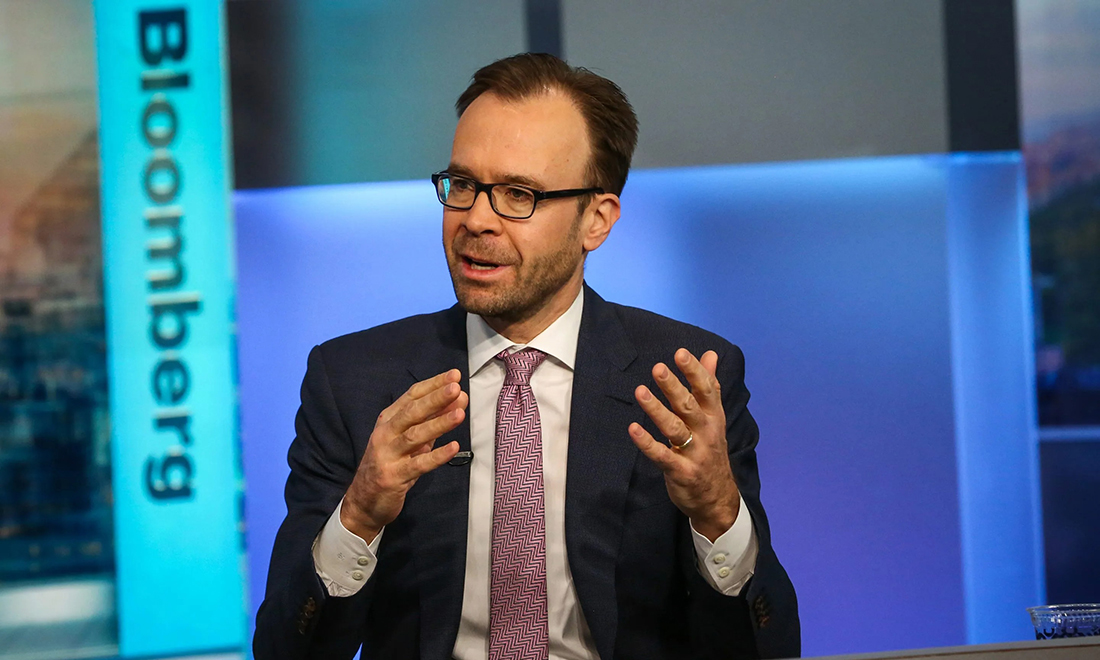
美联储(Federal Reserve)陷入了与通货膨胀的斗争中无法自拔,其政策的影响正在不断提高美国出现经济衰退的可能性。但是,美国经济可能承受的后果仍然无法确定。
经济学家们用飞机的比喻来形容美国当前所面临的局面,认为美联储正在试图缓慢降低经济引擎的速度,从而减轻通胀,保证实现“软着陆”。
当然,面对始终居高不下的通胀和如火如荼的俄乌冲突、欧洲愈演愈烈的能源危机等因素,美国经济要想实现软着陆将面临挑战。
甚至有人认为,美联储应对通胀是一项不可能完成的任务,并且“硬着陆”,也就是经济衰退,将不可避免。
但高盛集团(Goldman Sachs)的首席经济学家简·哈祖斯在9月5日发表的一份研究报告中表示,他相信软着陆依旧有可能实现,只是着陆的过程可能充满崎岖。
哈祖斯认为,美国经济如果出现以下变化,就能够避免最糟糕的经济后果:第一,经济增长“低于趋势水平”;第二,“劳动力市场再平衡”,失业率上升;第三,通货膨胀大幅下降。
虽然高盛的经济学家们依旧认为,美国明年有三分之一的概率出现轻度衰退,但哈祖斯在9月5日指出,他看到了“令人鼓舞的迹象”,表明经济正在朝着实现这三个目标的方向转变,并且有望实现软着陆。
朝着正确的方向发展
首先,有越来越多证据表明,通胀压力有所缓解,尤其是在产品价格方面。哈祖斯认为,这个趋势有可能会持续下去。
他写道:“大宗商品价格大幅下降、美元走强和供应链中断的显著改善,都表明商品物价上涨情况会持续减弱。”
其次,美国经济增长正处于“减速”阶段,这对降低通胀至关重要。哈祖斯指出,美联储加息使美国平均30年固定抵押贷款利率超过6%,应该有助于减少消费,从而降低消费物价。
他写道:“总之,我们预测美国明年的经济增长依旧将远低于趋势水平,我们仍然很满意这个预测。”
最后,哈祖斯指出,劳动力市场正在开始降温。过去四个月,每位劳动者可以选择的岗位数量,或者岗位-劳动者差距,已经减少了700,000个,并且实际工资增长速度放缓。
哈祖斯认为,这对美联储应对通胀是一个“令人鼓舞的”好消息,因为劳动力市场的“供需平衡”已经开始好转。
如果这些信号继续朝着正确的方向发展,美联储就能够放慢加息的步伐,甚至停止加息,而这将会提振经济和资产价格。
独树一帜
哈祖斯认为美国依旧有可能实现软着陆,这种观点让他成为投资银行界的另类。
许多大型投资银行都认为,现在美国经济最有可能出现的结果是陷入衰退。甚至有人将美国的经济衰退,作为未来12个月的“基准情景”。
例如,德意志银行(Deutsche Bank)从今年4月以来一直认为,美国发生“严重”经济衰退将是不可避免的。美国银行(Bank of America)则在7月表示,美国今年可能会陷入“轻度衰退”。
富国银行(Wells Fargo)的高级全球市场策略师斯科特·雷恩也曾经在8月31日的一份研究报告中指出,美联储应对通货膨胀的坚定立场最终将引发经济衰退。上周,美联储主席杰罗姆·鲍威尔在怀俄明州杰克逊霍尔召开的美联储年度会议上的鹰派言论,强调了美联储的这种立场。
他写道:“美联储的发言人称,他们更愿意牺牲一定程度的经济增长,来换取通胀下降。我们认为这将会导致经济衰退,使失业率升高。”
野村证券(Nomura)的高级美国经济学家罗布·登特在9月2日发表的一份研究报告中表示,他预计,“顽固的通货膨胀”将迫使美联储在即使经济疲软的情况下继续加息,因此美国将在今年第四季度开始陷入衰退。
瑞银集团(UBS)用于确定美国经济衰退概率的工具也显示经济衰退已经近在眼前。这个工具基于三个经济模型,分别是一个经济硬数据模型,考虑到失业率和零售销售额等具体结果,一个跟踪美国国债收益率曲线的模型,以及一个基于可用企业信贷数据的模型。今年夏天,基于这三个模型预测的经济衰退概率提高了20个百分点,达到60%。
当然,哈祖斯并非华尔街唯一一位认为美国不一定会陷入经济衰退的经济学家。
美国联信银行(Comerica Bank)的首席经济学家比尔·亚当斯上周对《财富》杂志表示:“我预测依旧有多种方法可以使美国经济继续艰难前行,避免明年的经济衰退。”
亚当斯称,如果大宗商品价格从最近的高点大幅下降,美联储就能够在未来几个季度放慢加息步伐,从而实现软着陆。
然而,他指出:“实现这个结果的概率与六个月前相比大幅下降。”(财富中文网)
译者:刘进龙
审校:汪皓
美联储(Federal Reserve)陷入了与通货膨胀的斗争中无法自拔,其政策的影响正在不断提高美国出现经济衰退的可能性。但是,美国经济可能承受的后果仍然无法确定。
经济学家们用飞机的比喻来形容美国当前所面临的局面,认为美联储正在试图缓慢降低经济引擎的速度,从而减轻通胀,保证实现“软着陆”。
当然,面对始终居高不下的通胀和如火如荼的俄乌冲突、欧洲愈演愈烈的能源危机等因素,美国经济要想实现软着陆将面临挑战。
甚至有人认为,美联储应对通胀是一项不可能完成的任务,并且“硬着陆”,也就是经济衰退,将不可避免。
但高盛集团(Goldman Sachs)的首席经济学家简·哈祖斯在9月5日发表的一份研究报告中表示,他相信软着陆依旧有可能实现,只是着陆的过程可能充满崎岖。
哈祖斯认为,美国经济如果出现以下变化,就能够避免最糟糕的经济后果:第一,经济增长“低于趋势水平”;第二,“劳动力市场再平衡”,失业率上升;第三,通货膨胀大幅下降。
虽然高盛的经济学家们依旧认为,美国明年有三分之一的概率出现轻度衰退,但哈祖斯在9月5日指出,他看到了“令人鼓舞的迹象”,表明经济正在朝着实现这三个目标的方向转变,并且有望实现软着陆。
朝着正确的方向发展
首先,有越来越多证据表明,通胀压力有所缓解,尤其是在产品价格方面。哈祖斯认为,这个趋势有可能会持续下去。
他写道:“大宗商品价格大幅下降、美元走强和供应链中断的显著改善,都表明商品物价上涨情况会持续减弱。”
其次,美国经济增长正处于“减速”阶段,这对降低通胀至关重要。哈祖斯指出,美联储加息使美国平均30年固定抵押贷款利率超过6%,应该有助于减少消费,从而降低消费物价。
他写道:“总之,我们预测美国明年的经济增长依旧将远低于趋势水平,我们仍然很满意这个预测。”
最后,哈祖斯指出,劳动力市场正在开始降温。过去四个月,每位劳动者可以选择的岗位数量,或者岗位-劳动者差距,已经减少了700,000个,并且实际工资增长速度放缓。
哈祖斯认为,这对美联储应对通胀是一个“令人鼓舞的”好消息,因为劳动力市场的“供需平衡”已经开始好转。
如果这些信号继续朝着正确的方向发展,美联储就能够放慢加息的步伐,甚至停止加息,而这将会提振经济和资产价格。
独树一帜
哈祖斯认为美国依旧有可能实现软着陆,这种观点让他成为投资银行界的另类。
许多大型投资银行都认为,现在美国经济最有可能出现的结果是陷入衰退。甚至有人将美国的经济衰退,作为未来12个月的“基准情景”。
例如,德意志银行(Deutsche Bank)从今年4月以来一直认为,美国发生“严重”经济衰退将是不可避免的。美国银行(Bank of America)则在7月表示,美国今年可能会陷入“轻度衰退”。
富国银行(Wells Fargo)的高级全球市场策略师斯科特·雷恩也曾经在8月31日的一份研究报告中指出,美联储应对通货膨胀的坚定立场最终将引发经济衰退。上周,美联储主席杰罗姆·鲍威尔在怀俄明州杰克逊霍尔召开的美联储年度会议上的鹰派言论,强调了美联储的这种立场。
他写道:“美联储的发言人称,他们更愿意牺牲一定程度的经济增长,来换取通胀下降。我们认为这将会导致经济衰退,使失业率升高。”
野村证券(Nomura)的高级美国经济学家罗布·登特在9月2日发表的一份研究报告中表示,他预计,“顽固的通货膨胀”将迫使美联储在即使经济疲软的情况下继续加息,因此美国将在今年第四季度开始陷入衰退。
瑞银集团(UBS)用于确定美国经济衰退概率的工具也显示经济衰退已经近在眼前。这个工具基于三个经济模型,分别是一个经济硬数据模型,考虑到失业率和零售销售额等具体结果,一个跟踪美国国债收益率曲线的模型,以及一个基于可用企业信贷数据的模型。今年夏天,基于这三个模型预测的经济衰退概率提高了20个百分点,达到60%。
当然,哈祖斯并非华尔街唯一一位认为美国不一定会陷入经济衰退的经济学家。
美国联信银行(Comerica Bank)的首席经济学家比尔·亚当斯上周对《财富》杂志表示:“我预测依旧有多种方法可以使美国经济继续艰难前行,避免明年的经济衰退。”
亚当斯称,如果大宗商品价格从最近的高点大幅下降,美联储就能够在未来几个季度放慢加息步伐,从而实现软着陆。
然而,他指出:“实现这个结果的概率与六个月前相比大幅下降。”(财富中文网)
译者:刘进龙
审校:汪皓
The Federal Reserve is locked in a battle with inflation, and the effects of its policies are increasing the odds of a recession. But the outcome for the American economy is far from set.
Economists use an aircraft analogy to describe what the U.S. is facing, arguing the Fed is attempting to slowly power down the economy’s engine, thereby reducing inflation and ensuring a “soft landing.”
Of course, with inflation and the war in Ukraine raging on, the European energy crisis looking worse day by day, a soft landing could be a challenge.
Some even argue that the Fed faces an impossible task in its fight against inflation, and that a “hard landing,” also known as a recession, is inevitable.
But Jan Hatzius, Goldman Sachs’ chief economist, said in a September 5 research note that he believes a soft landing is still possible, even if the flight path is bumpy.
Hatzius argues that the U.S. economy can avoid the worst of economic outcomes if it experiences 1) “below-trend” growth, 2) a “rebalancing of the labor market” that involves rising unemployment, and 3) a substantial decline in inflation.
While Goldman’s economists still argue there’s a one-in-three probability of a mild U.S. recession over the next year, Hatzius said on September 5 that he is seeing “encouraging signs” the economy is moving toward all three of these goals—and a soft landing.
Moving in the right direction
First, there’s growing evidence that inflationary pressures are easing, particularly when it comes to product prices. And that trend is likely to continue, Hatzius said.
“Sharply lower commodity prices, a stronger dollar, and large improvements in supply-chain disruptions all suggest that goods price inflation will continue to abate,” he wrote.
Second, U.S. economic growth is in the midst of a “slowdown” that is critical to reducing inflation. Hatzius noted that the Fed’s interest rate hikes have pushed the average 30-year fixed-mortgage rate in the U.S. above 6%, which should help reduce spending and, in turn, consumer prices.
“All told, we remain comfortable with our forecast that U.S. growth will remain well below trend over the next year,” Hatzius wrote.
Finally, Hatzius noted that the labor market is beginning to cool. The number of jobs available per worker, also known as the jobs-worker gap, has dropped by 700,000 over the past four months, and real wage growth is slowing.
That’s “encouraging” news for the Fed’s fight against inflation, the economist argued, as “the supply-demand balance” in the labor market is beginning to improve.
If these signals continue to trend in the right direction, it could enable the Fed to slow the pace of its interest rate hikes, or even stop them altogether, which would boost the economy and asset prices.
Standing out from the crowd
Hatzius’s view that a soft landing is still possible puts him on the fringe in the investment banking world.
Many major investment banks argue that a recession is now the most likely outcome for the U.S. economy. And some have gone a step further, making a U.S. recession their “base case” over the next 12 months.
Deutsche Bank, for example, has argued since April that a “major” recession is inevitable in the U.S. And Bank of America said in July that it now suspects a “mild recession” is coming this year.
Scott Wren, a senior global market strategist at Wells Fargo, also wrote in an Aug. 31 research note that the Fed’s firm stance against inflation—which was emphasized by Chair Jerome Powell’s hawkish comments at the Fed’s annual conference in Jackson Hole, Wyo., last week—will ultimately spark a recession.
“The Fed speakers are saying that they are more than willing to give up a good degree of economic growth in order to bring down inflation. We believe that will likely result in a recession and a higher rate of unemployment,” he wrote.
Nomura’s senior U.S. economist Rob Dent also said in a research note on September 2 that he expects a recession will begin in the fourth quarter of this year as “entrenched inflation” will force the Fed to continue raising rates even as the economy weakens.
And UBS’s tool for determining the likelihood of a U.S. recession, which is based on three economic models—a hard economic data model that factors in concrete outputs like the unemployment rate and retail sales, a model that tracks the yield curve of U.S. Treasuries, and a model based on available corporate credit data—shows a looming downturn as well. Over the summer, the probability of a recession based on these three models rose 20 percentage points to 60%.
Still, Hatzius is far from the only Wall Street economist arguing that a recession isn’t guaranteed.
“I can foresee ways that the economy could still muddle through and avoid a recession over the next year,” Bill Adams, Comerica Bank’s chief economist, told Fortune last week.
Adams said that if commodity prices decline substantially from their recent highs, the Fed might be able to slow the pace of its interest rate hikes in coming quarters, enabling a soft landing.
However, he noted that “the path to that outcome is much narrower than it looked six months ago.”






